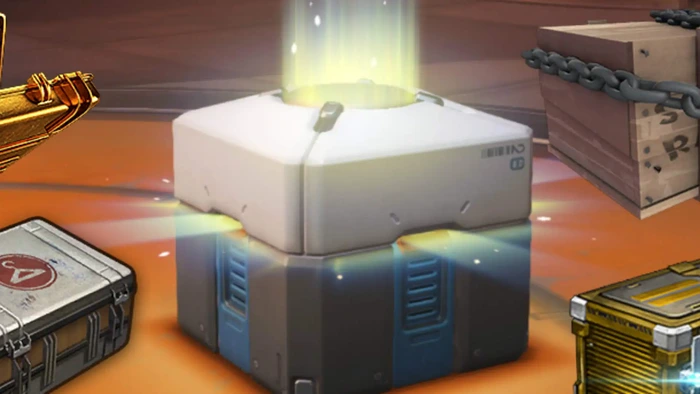Microtransactions: A Look Into The Dark Side Of Gaming
Once a niche hobby, gaming has now evolved into a multi-billion-dollar industry that is enjoyed by millions of people around the world. However, as the industry has grown and evolved over the years, so has the way in which it generates profit. Once upon a time, you’d go to a store, pay for a game, and that was it – you had the full game in your hands, ready to take home and enjoy. However, things have changed now, and gaming businesses have turned to microtransactions to continue to make money from consumers, long after they’ve paid for the game itself.
Although microtransactions appear innocuous at first glance, they have completely changed the gaming landscape and many people believe this to be for the worse. So, what are gaming microtransactions and what questions do they raise about ethical game design?

What Are Microtransactions?
Microtransactions are a simple addition to games, which have allowed gaming companies to continue to earn money from their products after consumers have already paid for games at the time of release.
They work by allowing players to purchase virtual products with micropayments and they can be used throughout all types of games, from the biggest releases to free-to-play mobile alternatives.
For example, let’s say you’ve bought a Call of Duty game at full price. The developers can continue to offer virtual goods for you to buy throughout the life of the game. This can include all sorts of things, including new weapons, camouflages for your weapons, special animations for your on-screen character, battle passes, and so on.
Likewise, a free-to-play game could offer you the chance to make a micropayment to purchase extra lives, speed up tasks, and add new features. It all depends on the game you’re playing.
What Do Gamers Think About Microtransactions?
As with all things in life, opinions vary greatly depending on who you ask. However, some gamers do seem to enjoy certain aspects of microtransactions and it’s easy to understand why.
As an example, consider the game Apex Legends. This is a free-to-play first-person shooter that has done very well. To generate revenue, the game relies on microtransactions, such as new characters, new weapon skins, character skins, special animations and emotes, battle passes, and so on.
The positive side of the argument is that these microtransactions can help to extend the enjoyment of the game. If your player base is becoming bored with the game, what better way to keep them around than to introduce a new character for them to try?
On the flip side, others don’t like microtransactions because they believe they should receive the full game at the time of purchase. If you’re spending a lot of money buying the new Call of Duty game, it seems unfair to have to continue to pay to unlock parts of the game that are seemingly held back intentionally to generate more revenue further down the line.
What Have Campaigners Said About Microtransactions?
Many campaigners are greatly concerned about microtransactions within games – especially when it comes to things like loot boxes. These are virtual products that can be purchased via microtransactions and will often be designed to look like chests or packs of cards. Once purchased, the player can open the loot box and will receive a randomly generated set of virtual products, which could range from common items to more desirable rare alternatives.
The issue that campaigners often have with these is that they believe that loot boxes are essentially paying for a currency to then gamble with, similar to top sweepstakes casinos. but without the regulation that comes with those. It makes a lot of sense when you think about it. Players are parting with their cash for a small chance to receive rare items – a big win.
The problem here, for many campaigners, is that they believe these microtransactions can lead to gambling addiction problems. This is, of course, more concerning when you consider how many children are playing these games.
What Have Industry Insiders Said About Microtransactions?
Many industry insiders seem reluctant to say much about the practice. It makes sense – after all, this is a great way for them to increase revenues, so they are unlikely to be too critical. Indeed, EA CEO Andrew Wilson commented in 2019 that microtransactions were designed to represent “value, fairness, choice, and fun”. It’s unlikely that a lot of gamers agree with this when they’re having to pay to access parts of games that they’ve already paid full retail price for.
However, Wilson did go on to suggest that the industry is working harder on “surfacing tools so that parents can actually feel more in control of the lives of their children”, which seems to be a step in the right direction.

Is the Criticism of Microtransactions Valid?
The criticism of microtransactions doesn’t seem to have a conclusive answer. The problem is that there are positive and negative aspects to them.
On the positive side, microtransactions can increase the longevity of a game you enjoy. Being able to play new characters, levels, and so on means you can get more out of the digital worlds you love.
On the negative side, it often feels like gamers are being rinsed for every cent possible by the industry. For example, having to pay 25% of the full game retail price for a new outfit for your character seems somewhat over the top. Similarly, loot boxes seem to be the main cause of the problem because they’re akin to gambling.
Have Any Recent Games Had Issues?
Many games have microtransaction issues, but it does depend on who you’re asking. After all, some people are fine with it. One example of a 2023 release that could have some problems is Diablo 4. At the time of release, Diablo 4’s microtransactions included bundles of items, such as accessories, armor, equipment, and mounts. If you wanted to purchase these for your character, you could be looking at prices of up to $10 for accessories, $16 for mounts, $18 for armor, and $28 for equipment.
Perhaps this isn’t a problem if you’re wealthy, but that seems to be a lot of money for the average gamer who has already paid full price for the game.






